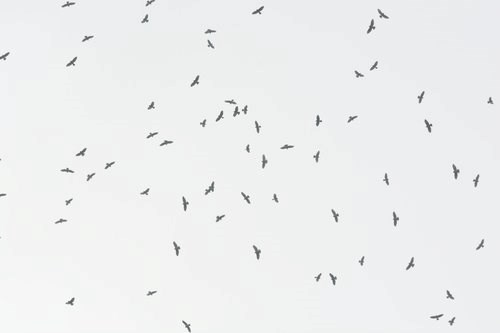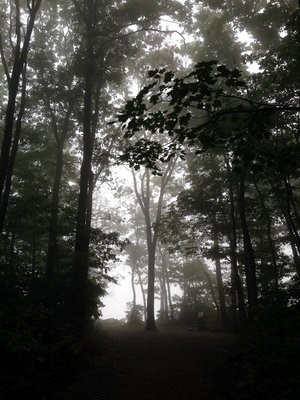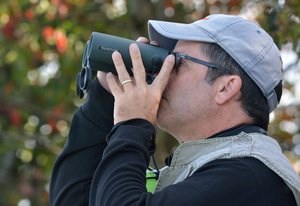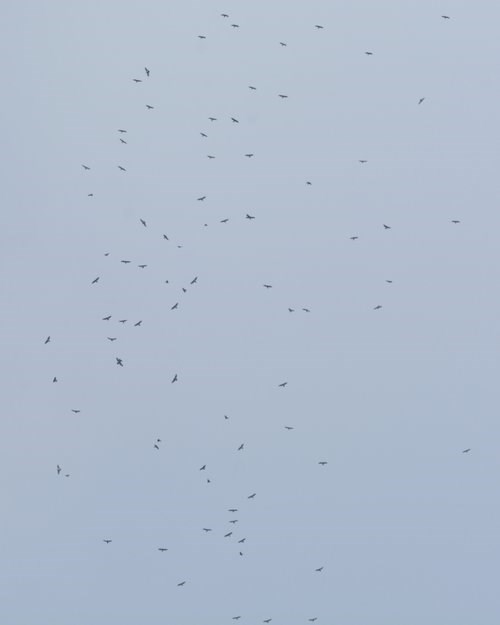Red-Letter Days
Posted on in On the Mountain by David Barber, Research Biologist


Maurice Broun, the Sanctuary's first curator, described "red-letter days" as "those days when hawks flood the Sanctuary skyways, as in fulfillment of a hawk-lover's hopes and dreams." And the great thing about red-letter days is that they are often unexpected. Such is the case with the peak of our broad-winged hawk flight this year. Sunday, September 17th had an inauspicious start, the ridge was completely socked in with low clouds and the front of the lookout was barely visible. It was the type of day where you wonder if the clouds will ever lift or will you sit in the clouds all day. It was a great chance to catch up with old friends and make new ones as there wasn't much to see except for the fog.
Finally, around 11:15 the clouds started to break up and we could see patches of blue. I looked up at a patch of blue over the Kempton valley and could see broadwings coming out of a dark gray clouds appearing briefly before quickly disappearing into another dark cloud. Two questions immediately popped into my head, how could they be up so high already and how many have we missed. We all started scanning the blue and would occasionally see small groups of broadwings streaming though. At the end of the hour counters tallied 157 broadwings.
Everyone's spirits were boosted and thoughts turned to the possibility that today could be the big flight of the season. Was the previous day's count of 1,589 broadwings just the beginning? We know that there had some big flights in New England earlier in the week, but those birds should have already passed through Pennsylvania.

Counts started to build over the next few hours, with 247 broadwings one hour, 527 the next, it was turning out to be a good day with just over 1,000 broadwings. Around 3:15 someone called out "there's a big kettle over #4." They weren't kidding, I put my binoculars on #4 where birds were streaming in and started moving up, the kettle stretched from just over #4 to three to four glasses high. The size of the kettle immediately brought me back to the time I visited the Veracruz River of Raptors watchsite in Mexico, where daily counts can exceed 100,000 in a day. "They're streaming out the top" one of the counter yelled and soon the only sound you heard was the sound of clickers as the counters tried to keep up with "flood" of broadwings. This clicking continued almost non-stop for the rest of the hour as new kettles formed and birds streamed past the lookout. At the end of the hour we all looked at each other in awe having just witnessed 2,908 broadwings pass by in 45 minutes.
Just as quickly the "flood" of broadwings slowed to a trickle and by day's end 4,019 broad-winged hawks were counted, a "red-letter day" that I, and I'm sure many others will remember for the rest of our lives.
